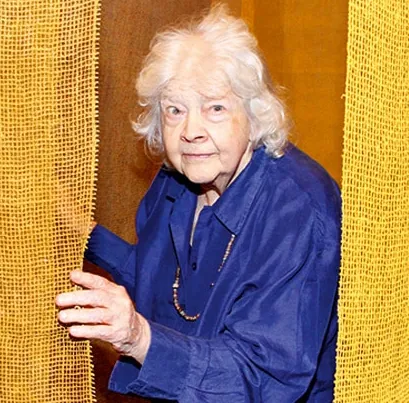
Amelia Toledo
Amelia Toledo was a versatile artist known for her work in sculpture, painting, drawing, and design. Spanning over fifty years, her career encompassed a wide array of artistic languages, techniques, materials, and production methods. Regarded as one of the pioneers of Brazilian contemporary art, Toledo left an indelible mark on the artistic landscape of her country.
Biography of Amelia Toledo
Amelia Toledo was born in São Paulo in 1926. In her teenage years, she was influenced by her father's work as a scientist, a connection that fostered her fascination with the natural world. This interest is evident in her choice of materials, which range from rocks and seashells to snails and soap bubbles, as well as in her landscape representations.
Toledo decided to leave high school in pursuit of an art career. Under the guidance of painter Anita Malfatti in 1939, she began working with watercolors. Inspired by constructivism, she ventured into jewelry and object design in 1943. She gained experience as a drafter in Vilanova Artigas's office and commenced studying drawing and painting under Yoshiya Takaoka, who remained her tutor until 1947. The following year, she continued her studies under Waldemar da Costa.
In 1957, Toledo held her inaugural solo exhibition at the Galeria Ambiente in São Paulo, merely a year before she relocated to London to pursue studies at the Central School of Arts and Crafts. During this time, she attended classes led by William Turnbull and embarked on the creation of collages and kinetic objects.
Upon returning to Brazil, she played a pivotal role in the establishment of the Universidade de Brasília, where she earned a master's degree in art in 1964 and later served as a lecturer during the early 1960s.
Throughout the 1960s, she delved into the art of metal engraving under the guidance of João Luís Chaves. During this period, she began her experimentation with two and three-dimensional sculptural pieces, incorporating a blend of natural and industrial materials. Her fundamentally experimental approach, characterized by geometric, playful, and sensorial elements, resonates with the neo-concrete works of artists like Lygia Clark and Lígia Pape.
Since then, Toledo has been involved in five editions of the São Paulo Biennale. She has also crafted public artworks for both São Paulo and Rio de Janeiro and her pieces are featured in significant private and public collections across Brazil.
Amelia Toledo passed away peacefully in her home in Cotia, São Paulo, in 2017.
Amelia Toledo's Art Style
Interactions with influential figures of Brazilian Modern Art spurred Toledo to cultivate a diverse body of work, intertwining various artistic languages such as sculpture, painting, and printmaking. This artistic journey was enriched by her collaborations with other artists of her era, including Mira Schendel, Tomie Ohtake, and Hélio Oiticica.
Amelia Toledo's varied artistic practice reflects her ambitious quest to explore a broad spectrum of creative possibilities. Beginning in the 1970s, her artistic output evolved beyond its initial constructive grammar, which was defined by geometric forms and curves, and shifted towards organic shapes. Toledo began collecting a range of materials, including shells and stones, integrating her surrounding landscapes as fundamental elements in her work. Concurrently, her paintings adopted monochromatic qualities, showcasing her fascination with investigating color and its dynamics.
Years:
Born in 1926
Country:
Brazil, São Paulo, State of São Paulo